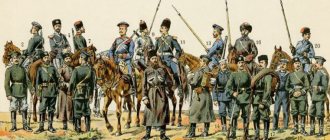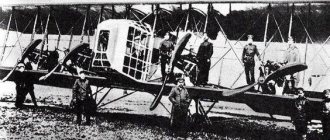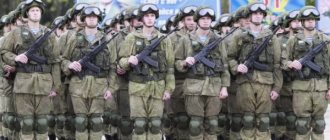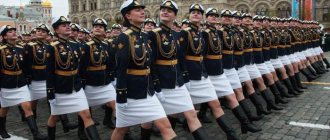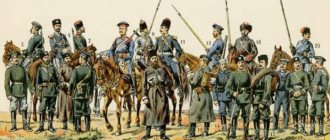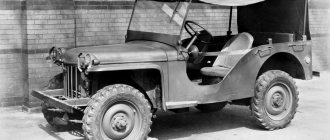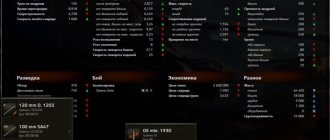Those who like to play computer tank “shooting” games, like real military personnel, do not always think about how this or that ammunition works; the result is important to them. However, a toy battle is different from a real one. In war, tanks rarely fight among themselves; with proper leadership of troops, they are designed to break through enemy defense lines, mobile envelopments of fortified areas and disrupt rear communications. However, duels are also possible, and then you cannot do without armor-piercing weapons. Along with the usual “blanks” and sub-calibers, a cumulative projectile is often used. World Of Tanks is a game whose developers tried to convey with maximum realism the equipment of the Second World War and the ammunition that was used by the armies participating in it. Its conditions do not claim to be completely historically accurate, but it gives a general idea of the conditions of a tank battle.
In order to correctly use a possible arsenal of destructive weapons, it is not necessary, but it is advisable to know how a cumulative projectile works, what are its main characteristics, and in what cases it should be used, and in what cases you can limit yourself to less expensive charges.
Tank evolution
The first tanks were slow, mobile artillery batteries (sometimes with multiple guns) protected by bulletproof armor. These were analogues of armored trains, with the difference that they could move not on rails, but on rough terrain and, of course, on roads. The evolution of technical solutions has led to new ways of using armored vehicles; they have become more mobile and taken over some of the functions of cavalry. The most advanced achievements could be boasted by the Soviet engineering school, which by the end of the thirties of the 20th century had come to a general concept that determined the appearance of a modern tank. All other countries until the end of the war continued to build combat vehicles according to an outdated design, with a front transmission, narrow tracks, riveted hulls and carburetor engines. Nazi Germany achieved several greater successes compared to Great Britain and the United States. The engineers who built the Tigers and Panthers made a number of attempts to increase the durability of their vehicles by using inclined armor. The Germans also had to change the width of the tracks according to the conditions of the Eastern Front. Long-barreled guns became another feature that brought the characteristics of Wehrmacht tanks closer to modern standards. At this point, progress in the camp of our enemies stopped.
Soviet cumulative anti-tank ammunition during the war
The cumulative effect of a directed explosion became known in the 19th century, shortly after the start of mass production of high explosives. The first scientific work devoted to this issue was published in 1915 in Great Britain.
This effect is achieved by giving explosive charges a special shape. Typically, for this purpose, charges are made with a recess in the part opposite to its detonator. When an explosion is initiated, a converging stream of detonation products is formed into a high-speed cumulative jet, and the cumulative effect increases when the recess is lined with a layer of metal (1-2 mm thick). The speed of the metal jet reaches 10 km/s. Compared to the expanding detonation products of conventional charges, in the converging flow of shaped charge products, the pressure and density of matter and energy are much higher, which ensures the directional effect of the explosion and the high penetrating force of the shaped charge jet.
When the conical shell collapses, the velocities of individual parts of the jet turn out to be somewhat different, as a result of which the jet stretches in flight. Therefore, a slight increase in the gap between the charge and the target increases the penetration depth due to the elongation of the jet. The thickness of the armor penetrated by cumulative shells does not depend on the firing range and is approximately equal to their caliber. At significant distances between the charge and the target, the jet breaks into pieces, and the penetration effect is reduced.
In the 30s of the 20th century, there was a massive saturation of troops with tanks and armored vehicles. In addition to traditional means of combating them, in the pre-war period, the development of cumulative projectiles was carried out in some countries. What was especially tempting was that the armor penetration of such ammunition did not depend on the speed of contact with the armor. This made it possible to successfully use them to destroy tanks in artillery systems that were not originally intended for this purpose, as well as to create highly effective anti-tank mines and grenades. Germany had advanced the most in the creation of cumulative anti-tank ammunition; by the time of the attack on the USSR, cumulative artillery shells of 75-105 mm caliber had been created and adopted there.
Unfortunately, in the Soviet Union before the war, due attention was not paid to this area. In our country, the improvement of anti-tank weapons proceeded by increasing the caliber of anti-tank guns and increasing the initial velocities of armor-piercing shells. To be fair, it should be said that in the USSR in the late 30s, an experimental batch of 76-mm cumulative shells was fired and tested. During the tests, it turned out that cumulative shells equipped with standard fuses from fragmentation shells, as a rule, do not penetrate armor and ricochet. Obviously, the problem was in the fuses, but the military, which already did not show much interest in such shells, finally abandoned them after unsuccessful firing.
At the same time, a significant number of recoilless (dynamo-reactive) Kurchevsky guns were manufactured in the USSR.
76-mm Kurchevsky recoilless rifle on a truck chassis
The advantage of such systems is their light weight and lower cost compared to “classic” guns. Recoilless rifles in combination with cumulative projectiles could quite successfully prove themselves as an anti-tank weapon.
With the outbreak of hostilities, reports began to arrive from the fronts that German artillery was using previously unknown so-called “armor-burning” shells that effectively hit tanks. When inspecting the damaged tanks, we noticed the characteristic appearance of holes with melted edges. At first, it was suggested that the unknown shells used “fast-burning thermite,” accelerated by powder gases. However, this assumption was soon refuted experimentally. It was found that the processes of combustion of thermite incendiary compositions and the interaction of the slag jet with the metal of the tank armor proceed too slowly and cannot be realized in a very short time for the shell to penetrate the armor. At this time, samples of “armor-burning” shells captured from the Germans were delivered from the front. It turned out that their design is based on the use of the cumulative effect of an explosion.
At the beginning of 1942, designers M.Ya. Vasiliev, Z.V. Vladimirov and N.S. Zhitkikh designed a 76-mm cumulative projectile with a conical cumulative recess lined with a steel shell. An artillery shell body with bottom equipment was used, the chamber of which was additionally bored into a cone in its head part. The projectile used a powerful explosive - an alloy of TNT and hexogen. The bottom hole and plug served to install an additional detonator and a beam detonator capsule. A big problem was the lack of a suitable fuse in production. After a series of experiments, the AM-6 aviation instantaneous fuse was chosen.
HEAT shells, which had armor penetration of about 70-75 mm, appeared in the ammunition load of regimental guns in 1943, and were mass-produced throughout the war.
Regimental 76-mm gun mod. 1927
The industry supplied the front with about 1.1 million 76-mm cumulative anti-tank shells. Unfortunately, their use in tank and divisional 76-mm guns was prohibited due to the unreliable operation of the fuse and the danger of an explosion in the barrel. Fuzes for cumulative artillery shells, meeting safety requirements when firing from long-barreled guns, were created only at the end of 1944.
In 1942, a group of designers including I.P. Dzyuba, N.P. Kazeikina, I.P. Kucherenko, V.Ya. Matyushkina and A.A. Greenberg developed cumulative anti-tank shells for 122-mm howitzers.
The 122-mm cumulative projectile for the howitzer of the 1938 model had a body made of steel cast iron, was equipped with an effective explosive composition based on hexogen and a powerful PETN detonator. The 122-mm cumulative projectile was equipped with the B-229 instantaneous fuse, which was developed in a very short time at TsKB-22, headed by A.Ya. Karpov.
122-mm howitzer M-30 mod. 1938
The projectile was put into service and put into mass production at the beginning of 1943, and managed to take part in the Battle of Kursk. Until the end of the war, more than 100 thousand 122-mm cumulative shells were produced. The projectile penetrated armor up to 150 mm thick along the normal line, ensuring the defeat of heavy German Tiger and Panther tanks. However, the effective firing range of howitzers at maneuvering tanks was suicidal - 400 meters.
The creation of cumulative shells opened up great opportunities for the use of artillery guns with relatively low initial velocities - 76-mm regimental guns of the 1927 and 1943 models. and 122-mm howitzers of the 1938 model, which were available in large quantities in the army. The presence of cumulative shells in the ammunition loads of these guns significantly increased the effectiveness of their anti-tank fire. This significantly strengthened the anti-tank defense of Soviet rifle divisions.
One of the main tasks of the Il-2 armored attack aircraft, which entered service at the beginning of 1941, was to fight armored vehicles. However, the cannon armament available to the attack aircraft could only effectively hit lightly armored vehicles. 82-132 mm rocket projectiles did not have the required firing accuracy. However, in 1942, cumulative RBSK-82 were developed to arm the Il-2.
RBSC-82
The head of the RBSK-82 missile consisted of a steel cylinder with a wall thickness of 8 mm. A cone made of sheet iron was rolled into the front part of the cylinder, creating a recess in the explosive substance poured into the cylinder of the projectile head. A tube ran through the center of the cylinder, which served “to transmit a beam of fire from the pin cap to the TAT-1 detonator cap.” The shells were tested in two versions of explosive equipment: TNT and alloy 70/30 (TNT with hexogen). The shells with TNT had an AM-A fuse, and the shells with the 70/30 alloy had an M-50 fuse. The fuses had a pin-type capsule of the APUV type. The RBSK-82 missile unit is standard, from M-8 missile shells filled with pyroxylin gunpowder.
A total of 40 RBSK-82s were used up during the tests, 18 of them by firing in the air, the rest by firing on the ground. Captured German Pz tanks were fired upon. III, StuG III and the Czech tank Pz.38(t) with reinforced armor. Firing in the air was carried out at the StuG III tank from a dive at an angle of 30° with salvoes of 2-4 shells in one pass. The firing distance was 200 m. The shells showed good stability along the flight path, but it was not possible to get a single drop into the tank.
The RBSK-82 cumulative action armor-piercing rocket-propelled projectile, filled with 70/30 alloy, penetrated 30 mm thick armor at any impact angle, and pierced 50 mm thick armor at a right angle, but did not penetrate it at a 30° impact angle. Apparently, the low armor penetration is a consequence of the delay in the firing of the fuse “from the ricochet and the cumulative jet is formed with a deformed cone.”
RBSK-82 shells in TNT ammunition penetrated 30 mm thick armor only at impact angles of at least 30°, and did not penetrate 50 mm armor under any impact conditions. The holes produced by penetrating armor had a diameter of up to 35 mm. In most cases, penetration of the armor was accompanied by spalling of the metal around the exit hole.
HEAT missiles were not accepted for service due to the lack of a clear advantage over standard rockets. A new, much more powerful weapon was already on the way - PTABs.
Priority in the development of small cumulative aviation bombs belongs to domestic scientists and designers. In mid-1942, the famous fuze developer I.A. Larionov, proposed the design of a light anti-tank bomb with cumulative action. The Air Force command showed interest in implementing the proposal. TsKB-22 quickly carried out design work and testing of the new bomb began at the end of 1942. The final version was PTAB-2.5-1.5, i.e. an anti-tank aviation bomb with a cumulative effect weighing 1.5 kg in the dimensions of a 2.5 kg aviation fragmentation bomb. The State Defense Committee urgently decided to adopt the PTAB-2.5-1.5 and organize its mass production.
The first PTAB-2.5-1.5 housings and riveted pinnate-cylindrical stabilizers were made from sheet steel 0.6 mm thick. To increase the fragmentation effect, a 1.5-mm steel jacket was additionally put on the cylindrical part of the bomb. The PTAB combat charge consisted of a mixed BB of the TGA type, equipped through the bottom point. To protect the AD-A fuse impeller from spontaneous collapse, a special fuse made of a square-shaped tin plate with a fork of two wire mustaches attached to it, passing between the blades, was put on the bomb stabilizer. After the PTAB was dropped from the aircraft, it was torn off the bomb by the oncoming air flow.
Upon impact with the tank's armor, a fuse was triggered, which, through a tetryl detonator block, caused the detonation of the explosive charge. When the charge detonated, due to the presence of a cumulative funnel and a metal cone in it, a cumulative jet was created, which, as field tests showed, pierced armor up to 60 mm thick at an impact angle of 30° with a subsequent destructive effect behind the armor: defeating the tank crew, initiating detonation of ammunition , as well as ignition of fuel or its vapors.
The bomb load of the Il-2 aircraft included up to 192 PTAB-2.5-1.5 bombs in 4 cassettes of small bombs (48 pieces each) or up to 220 pieces when they were rationally placed in bulk in 4 bomb bays.
The adoption of PTABs was kept secret for some time; their use without the permission of the high command was prohibited. This made it possible to use the effect of surprise and effectively use new weapons in the battle of Kursk.
The massive use of PTAB had a stunning effect of tactical surprise and had a strong moral impact on the enemy. German tank crews, however, like Soviet ones, by the third year of the war had already become accustomed to the relatively low effectiveness of air bombing strikes. At the initial stage of the battle, the Germans did not use dispersed marching and pre-battle formations at all, that is, on the routes of movement in columns, in places of concentration and in starting positions, for which they were severely punished - the PTAB flight line blocked 2-3 tanks, one distant from the other at 60-75 m, as a result of which the latter suffered significant losses, even in the absence of massive use of IL-2. One IL-2 from a height of 75-100 meters could cover an area of 15x75 meters, destroying all enemy equipment there. On average, during the war, irrecoverable tank losses from aviation did not exceed 5%; after the use of PTAB in certain sectors of the front, this figure exceeded 20%.
Having recovered from the shock, the German tank crews soon moved exclusively to dispersed marching and pre-battle formations. Naturally, this greatly complicated the management of tank units and subunits, increased the time for their deployment, concentration and redeployment, and complicated the interaction between them. In parking lots, German tank crews began to place their vehicles under trees, light mesh canopies, and install light metal meshes over the roof of the turret and hull. The effectiveness of IL-2 strikes using PTAB decreased by approximately 4-4.5 times, remaining, however, on average 2-3 times higher than when using high-explosive and high-explosive fragmentation bombs.
In 1944, a more powerful anti-tank bomb PTAB-10-2.5, with the dimensions of a 10-kg aircraft bomb, was adopted. It provided penetration of armor up to 160 mm thick. According to the principle of operation and purpose of the main components and elements, PTAB-10-2.5 was similar to PTAB-2.5-1.5 and differed from it only in shape and dimensions.
In the 1920s-1930s, the Red Army was armed with the muzzle-loading “Dyakonov grenade launcher,” created at the end of the First World War and subsequently modernized.
It was a 41-mm caliber mortar, which was put on the barrel of a rifle, fixed on the front sight with a cutout. On the eve of the Great Patriotic War, every rifle and cavalry squad had a grenade launcher. Then the question arose about giving the rifle grenade launcher “anti-tank” properties.
During the Second World War, in 1944, the VKG-40 cumulative grenade entered service with the Red Army. The grenade was fired with a special blank cartridge containing 2.75 g of VP or P-45 gunpowder. The reduced charge of the blank cartridge made it possible to fire a grenade at direct fire with the butt resting on the shoulder, at a range of up to 150 meters.
The cumulative rifle grenade is designed to combat lightly armored vehicles and enemy mobile vehicles not protected by armor, as well as firing points. The VKG-40 was used very limitedly, which is explained by the low accuracy of fire and poor armor penetration.
During the war, the USSR produced a significant number of hand-held anti-tank grenades. Initially these were high-explosive grenades; as the thickness of the armor increased, the weight of anti-tank grenades also increased. However, this still did not ensure penetration of the armor of medium tanks, so the RPG-41 grenade, with an explosive weight of 1400 g, could penetrate 25 mm armor.
Needless to say, what a danger this anti-tank weapon posed to those who used it.
In mid-1943, the Red Army adopted a fundamentally new cumulative action grenade, RPG-43, developed by N.P. Belyakov. This was the first cumulative hand grenade developed in the USSR.
Sectional view of the RPG-43 hand-held cumulative grenade
The RPG-43 had a body with a flat bottom and a conical lid, a wooden handle with a safety mechanism, a belt stabilizer and an impact-ignition mechanism with a fuse. Inside the case is placed a bursting charge with a cumulative conical recess lined with a thin layer of metal, and a cup with a safety spring and a sting fixed in its bottom.
At its front end of the handle there is a metal sleeve, inside of which there is a fuse holder and a pin holding it in the rearmost position. On the outside, a spring is put on the bushing and fabric tapes are laid, attached to the stabilizer cap. The safety mechanism consists of a folding bar and a pin. The hinged bar serves to hold the stabilizer cap on the grenade handle before it is thrown, preventing it from sliding or turning in place.
When throwing a grenade, the hinged bar separates and releases the stabilizer cap, which, under the action of a spring, slides off the handle and pulls the tapes behind it. The safety pin falls out under its own weight, releasing the fuse holder. Thanks to the presence of a stabilizer, the grenade flew head-first, which is necessary for optimal use of the energy of the grenade's cumulative charge. When a grenade hits an obstacle with the bottom of the body, the fuse, overcoming the resistance of the safety spring, is impaled on the sting by a detonator cap, which causes the explosive charge to detonate. The RPG-43's shaped charge penetrated armor up to 75 mm thick.
With the advent of German heavy tanks on the battlefield, an anti-tank hand grenade with greater armor penetration was required. A group of designers consisting of M.Z. Polevanova, L.B. Ioffe and N.S. Zhitkikh developed the RPG-6 cumulative grenade. In October 1943, the grenade was adopted by the Red Army. The RPG-6 grenade is in many ways similar to the German PWM-1.
German PWM-1 anti-tank hand grenade
The RPG-6 had a teardrop-shaped body with a charge and an additional detonator and a handle with an inertial fuse, a detonator capsule and a tape stabilizer.
The fuse firing pin was blocked by a pin. The stabilizer bands were placed in the handle and held in place by a safety bar. The safety pin was removed before throwing. After the throw, the safety bar flew off, the stabilizer was pulled out, the firing pin was pulled out - the fuse was cocked.
Thus, the RPG-6’s safety system was three-stage (the RPG-43’s was two-stage). In terms of technology, a significant feature of the RLG-6 was the absence of turned and threaded parts, the widespread use of stamping and knurling. Compared to the RPG-43, the RPG-6 was more technologically advanced in production and somewhat safer to use. RPG-43 and RPG-6 were thrown at 15-20 m, after the throw the fighter had to take cover.
During the war years, hand-held anti-tank grenade launchers were never created in the USSR, although work was carried out in this direction. The main anti-tank weapons of the infantry were still anti-tank rifles and hand anti-tank grenades. This was partly offset by a significant increase in the number of anti-tank artillery in the second half of the war. But during the offensive, anti-tank guns could not always accompany the infantry, and in the event of the sudden appearance of enemy tanks, this often led to large and unjustified losses.
Based on materials: https://operation-barbarossa.narod.ru/artelleria/76-mm-m1927.htm https://weapon.at.ua/load/261-1-0-540 https://ser-sarajkin .narod2.ru/ALL_OUT/AiKOut13/RBSK-82/RBSK-82002.htm
When did we have cumulative ammunition?
As history has shown, world technical thought only came to the general ideology of tank building adopted in the USSR in the mid-fifties. But there were also directions in which the enemy was ahead of us. Already at the beginning of the war, the German troops were armed with a cumulative projectile. The principle of operation of this formidable armor-piercing weapon, in general, was known to Soviet designers from intelligence data. With the outbreak of hostilities, the opportunity arose to study captured samples. But when trying to make copies and analogues, numerous technical difficulties arose. Only by 1944 did the USSR create its own artillery and tank cumulative projectile, capable of penetrating the increased armor protection of German vehicles by that time. Currently, most of the ammunition of each combat unit consists of this type of ammunition.
Origins of the invention and further development of the effect
| When did it happen | What happened |
| 1864 | M. Bereskov's discovery of the cumulative effect. |
| 1910 – 1926 | Multiple studies by various countries to create cumulative ammunition and their testing in wartime conditions |
| 1935 | The first samples of cumulative projectiles are being created in Germany. |
| 1940 | The use of cumulative ammunition by the Wehrmacht army. Opening of production facilities for their creation in the USA. |
| 1942 | The Soviet Union begins mass production of shells for use in artillery divisions. |
| 1950 | US military engineers create the world's first projectile with a high level of stabilization and begin research on its improvement. |
| 1960 | Initial tests of balanced projectiles with a cumulative effect developed in the USSR. |
| 1990 | The creation by military engineers of the USSR of the world's first tandem ammunition, which is capable of penetrating armor up to 8 cm. |
The year 1864 was a real breakthrough for the mine master Mikhail Matveevich Bereskov, who discovered the cumulative effect. After the idea was brought to life, multiple tests began to test its effectiveness against hard and armored objects. The military leadership of many countries was shocked by the effectiveness with which cumulative shells destroy armored vehicles. Such tests forced scientists from all over the world to begin research into M. Bereskov’s development.
In the period from 1910 to 1926. Research by military engineers from Great Britain, the USA, Russia, Germany, Turkey, and France continued actively to create various types of mines and projectiles with a cumulative effect. The main goal of all developments was to find the most suitable shape and material that could destroy heavily armored objects.
In 1935, German engineers began to create shells with a shaped charge for artillery regiments, which actively used them during the years 1941-1944. Thanks to the perceived potential of German shells against Soviet equipment, the Soviet Union, using German samples as a basis, began production of similar ammunition.
In 1942, the Soviet Union managed to begin mass production of shells that could be used in artillery guns.
Cumulative ammunition in the post-war period
In July 1950, American military engineers invented a completely new projectile model, with high stability during flight and a unique lining.
In 1960, a projectile was created that had an improved structure and was made from materials that were completely superior to its predecessors. In the same year, multiple studies were started to improve existing developments.
1990 - Creation of the world's first tandem ammunition, which is capable of penetrating armor up to 8 cm.
Difficult situation on the Eastern Front
It should also be noted that at the beginning of the war it was extremely difficult for the Germans to fight Soviet armored vehicles. All medium, and especially heavy tanks in service with the Red Army had reliable shell-proof armor, which was also inclined. The caliber of the turret guns, if there were any (and the T-1, for example, was armed only with a machine gun), was not enough to hit the T-34 or KV. Only attack aircraft, field or anti-aircraft artillery, which usually fired blanks, could fight our tanks. The effectiveness of the application increased if the charge was cumulative. The sub-caliber projectile also had strong armor-piercing power, but it turned out to be too complex to produce and required high costs, and Germany, which fought in addition to the Eastern Front both at sea and in Africa, had to economize.
First attempts to create anti-tank weapons
Immediately after the appearance of armored vehicles on the battlefield, the opposing sides were faced with the question of their destruction or, in extreme cases, causing the greatest damage to them. An ordinary cartridge did not penetrate the protection, although its layer was not very thick due to the low power of internal combustion engines of that time (and this was during the First World War). There were no special armor-piercing ammunition yet; they needed to be invented. Design capabilities were limited by two factors: cost, on the one hand, and damage, on the other. The thought moved in different directions. Its pinnacle was the cumulative projectile. The principle of operation of different armor-piercing projectiles will be discussed below.
Interesting Facts
Of course, Russia is currently working to improve, among other things, the cumulative weapons themselves. Modern domestic grenades of this variety, for example, are capable of penetrating a layer of metal more than a meter thick.
Weapons of this type have been used by different countries of the world for quite a long time. However, there are still all sorts of legends and myths about him. So, for example, sometimes on the Internet you can find information that cumulative jets, when entering the internal space of a tank, can cause such a sharp jump in pressure that it leads to the death of the crew. Horror stories are often told about this effect of cumulative waves on the Internet, including by the military themselves. There is even an opinion that Russian tank crews specially drive with their hatches open during combat operations in order to relieve pressure in the event of a hit from a cumulative projectile.
However, according to the laws of physics, a metal jet cannot cause such an effect. This type of projectile simply concentrates the energy of the explosion in a specific direction. To the question of whether a cumulative jet burns or pierces armor, there is thus a very simple answer. When it encounters the material of the tank walls, it slows down and really puts strong pressure on it. As a result, the metal begins to spread to the sides and is washed out in drops at high speed into the tank.
In this case, the material liquefies precisely because of pressure. The temperature of the cumulative jet is low. At the same time, it itself, of course, does not create any significant shock wave. The jet can penetrate right through the human body. Also, drops of liquid metal that come off the armor itself have serious destructive power. Even the shock wave from the explosion of the ammunition itself is not able to penetrate the hole made by the jet in the armor. Accordingly, no excess pressure arises inside the tank.
According to the laws of physics, the answer to the question of whether a cumulative jet pierces or burns through armor is thus obvious. When it comes into contact with metal, it simply liquefies it and passes into the car. It does not create excess pressure behind the armor. Therefore, of course, it is not worth opening the vehicle hatch when the enemy uses such ammunition. On top of everything else, this, on the contrary, increases the risk of shell shock or death of crew members. The blast wave from the projectile itself can penetrate into the open hatch.
How to penetrate armor
To penetrate conventional sheet armor, you need to concentrate on a section of it, imparting kinetic energy to it. The easiest way to do this is with a projectile, which is a solid blank equipped with a pointed end that is crushed when it hits an obstacle. The condition for the destruction of the barrier can be a sufficiently strong impulse that causes local overvoltages that exceed the intermolecular bonds of the metal in magnitude. This is what they did at first: they fired blanks, realizing that an explosion produced even on the very surface of the armor was unlikely to be able to hit manpower and mechanisms due to the dispersion of the shock wave. The fragments in this case are also practically useless.
Experiments with water and gelatin armor
If desired, you can recreate the cumulative effect even at home. To do this, you will need distilled water and a high-voltage spark gap. The latter can be made, for example, from a cable by soldering a copper washer to its braiding coaxially with the main core. Next, the central wire must be connected to the capacitor.
The role of a funnel in this experiment can be played by a meniscus formed in a thin paper tube. The discharger and the capillary must be connected with a thin elastic tube. Next, pour water into the tube using a syringe. After the formation of the meniscus at a distance of approximately 1 cm from the spark gap, you need to install a capacitor and close the circuit with a conductor attached to the insulating rod.
During such a home experiment, high pressure will develop in the breakdown region. The shock wave will run towards the meniscus and collapse it.
The blank cracked the tank
The improvement of armor protection, as well as the use of its inclined arrangement, reduced the effectiveness of a solid armor-piercing projectile. When it hit an oblique plane, it most often ricocheted, although due to its characteristics it was sometimes capable of so-called normalization. It consisted in the fact that after the first contact with the tip, the motion vector changed slightly (up to five degrees), and the angle of impact on the armor became more obtuse. This led to a more effective distribution of the load on the area of the affected protection, and even if the armor did not penetrate through, a kind of funnel was formed on its inner side, and pieces of metal flew inside the vehicle at high speed, maiming and killing the crew. In addition, one should not discount the compression effect, in other words, a strong and rapid change in pressure (in essence, a powerful blow of an air wave).
Advantages and disadvantages
What are the advantages of cumulative projectiles? First of all, the military considers their advantages to be that, unlike sub-caliber ones, their ability to penetrate armor does not depend on their speed. Such shells can also be fired from light guns. Also, such charges are quite convenient to use in reactive grants. For example, this is how the RPG-7 hand-held anti-tank grenade launcher is used. The cumulative jet of such weapons armors tanks with high efficiency. The Russian RPG-7 grenade launcher is still in service today.
The armor effect of a cumulative jet can be very destructive. Very often it kills one or two crew members and causes the ammunition stockpile to explode.
The main disadvantage of such weapons is considered to be the inconvenience of using them in an “artillery” manner. In most cases, projectiles are stabilized by rotation during flight. In cumulative ammunition, it can cause destruction of the jet. Therefore, military engineers are trying in every possible way to reduce the rotation of such projectiles in flight. A variety of methods can be used for this.
For example, such ammunition may use a special lining texture. Also, projectiles of this type are often supplemented with a rotating body. In any case, it is more convenient to use such charges in low-velocity ammunition or generally stationary ones. These could be, for example, rocket-propelled grenades, light gun shells, mines, and ATGMs.
Sub-caliber means
A strong steel core encased in a softer projectile could solve the problem of armor deterioration. After hitting, this rod seems to go beyond its temporary shell and deliver a strong blow, concentrated over a small area. Sub-calibers are capable of penetrating thick armor, partially retaining the advantages of a blank projectile. They have their drawbacks, less armor-piercing at long distances and a much more modest normalization angle (the rotation does not exceed two degrees). Despite all its effectiveness, this ammunition was quite high-tech, expensive, and also did not always cope with its task. And then it appeared...
How does a cumulative projectile work?
The main drawback of all previous developments in the field of armor-piercing ammunition is expressed in their very name. They are designed to punch. But this is not enough. Well, they made a hole in the armor, but if it extinguishes the energy of the projectile, then it can no longer cause significant harm to the internal mechanisms and crew. The tank can be repaired by repairing the hole, the wounded tankers can be sent to the hospital, the dead can be buried with honors, and the vehicle can be sent back into battle. However, all this becomes impossible if the armor is hit by a cumulative projectile. Its principle of operation is that after burning a hole, an explosive charge is rushed into it, destroying everything that seemed reliably protected.
Armor-piercing sub-caliber projectile and its description
As we noted above, such ammunition is ideal for shooting at tanks. It is interesting that the sub-caliber does not have the usual fuse and explosive. The principle of operation of the projectile is entirely based on its kinetic energy. If you compare it, it is something similar to a massive high-velocity bullet.
The subcaliber consists of a reel body. A core is inserted into it, which is often 3 times smaller than the caliber of the gun. High-strength metal-ceramic alloys are used as core material. If previously it was tungsten, today depleted uranium is more popular for a number of reasons. During the shot, the entire load is taken by the pallet, thereby ensuring the initial flight speed. Since the weight of such a projectile is less than that of a conventional armor-piercing projectile, by reducing the caliber it was possible to achieve an increase in flight speed. We are talking about significant values. Thus, a finned sabot projectile flies at a speed of 1,600 m/s, while a classic armor-piercing projectile flies at 800-1,000 m/s.
Device
Currently, there is no more effective means of fighting tanks than a cumulative projectile. World Of Tanks offers gamers to purchase them only for “gold”, classifying these virtual ammunition as “gold”. And no wonder, with a successful hit they guarantee the destruction of the target. It is not worth spending them on opponents who do not have a sufficiently high degree of protection. If you can use a regular “head”, that is, an armor-piercing projectile, then it is recommended to use it. It’s easy to find out how to buy a cumulative projectile by reading the terms of the game, but it is recommended not to waste it, otherwise there won’t be enough of it at the right time. But these are all games, and in a real battle...
The general military principle of concentration has been successfully applied in the design of cumulative ammunition. On a small area of primary contact, a jet of gas heated to a plasmatic state appears, which, like a welding machine, burns a hole. Thermite action is accompanied by the penetration of the main charge into the protected space, which explodes under the armor and causes major destruction. This principle was used in the design of the hand-held “Faustpatron”, which was widely used at the end of World War II. The cumulative RPG projectile works the same way. However, tank builders have learned to deal with this problem.
Why it penetrates armor: the principle of operation of a cumulative jet
During the Second World War, the features of the “work” of such shells had not yet been well studied. That is why the name “armor-burning” was used in relation to them. Later, already in 1949, the cumulation effect was taken seriously in our country. In 1949, the Russian scientist M. Lavrentyev created the theory of cumulative jets and received the Stalin Prize for this.
Ultimately, the researchers were able to find out that the high penetration ability of projectiles of this type has absolutely nothing to do with high temperatures. When the detonator explodes, a cumulative jet is formed, which, upon contact with the armor of the tank, creates enormous pressure on its surface of several tons per square centimeter. Such indicators also exceed the yield strength of the metal. As a result, a hole several centimeters in diameter is formed in the armor.
Jets of modern ammunition of this type are capable of piercing tanks and other armored vehicles literally right through. The pressure they exert on the armor is truly enormous. The temperature of the cumulative projectile jet is usually low and does not exceed 400-600 °C. That is, it cannot actually burn through armor or melt it.
The cumulative projectile itself does not come into direct contact with the material of the tank walls. It explodes at some distance. After its release, parts of the cumulative jet move at unequal speeds. Therefore, during the flight it begins to stretch. When the distance reaches 10-12 funnel diameters, the jet disintegrates. Accordingly, it can have the greatest destructive effect on the armor of a tank when it reaches its maximum length, but does not yet begin to collapse.
Counteracting a cumulative explosion
The first samples of armor-piercing ammunition were designed for the armor protection used on tanks during the Second World War, and it was simple. Nothing prevented the jet of hot gas from acting on the metal layer; it appeared immediately after the impact. The simplest countermeasure is to create conditions for premature activation of the thermite component of the charge. To do this, it is enough to create an outer layer of “false armor” - and the jet will heat the air instead of metal.
The second method is applicable to any tanks created without taking into account the capabilities of cumulative projectiles. It is necessary to disperse the concentrated flow with a small counter-explosion, for which TNT can be placed on the armor in special boxes on the outer surface of the vehicle. This method is used quite widely today.
The third method is used in the latest generation of tanks, which use integrated armor technology. Modern protection is multi-layered, alternating ceramic fillers, explosive investigators and heavy-duty sheet armor.
What can protection be made of?
During the Second World War, the Soviet army used fairly massive steel screens. Sometimes they could be made of 10 mm steel and extended 300-500 mm. During the war, the Germans everywhere used lighter steel mesh protection. At the moment, some durable screens are capable of protecting tanks even from high-explosive fragmentation shells. By causing detonation at a certain distance from the armor, they reduce the impact of the shock wave on the vehicle.
Sometimes multi-layer protective screens are now used for tanks. For example, a sheet of steel 8 mm thick can be carried 150 mm behind the vehicle, after which the space between it and the armor is filled with light material - expanded clay, glass wool, etc. Next, a steel mesh is also placed 300 mm on top of such a screen. Such devices are capable of protecting the vehicle from almost all types of explosive ammunition.
Tandem projectiles
There is no defense that cannot be overcome at all. The conventional “burners” of armor were replaced by the tandem cumulative projectile after the advent of countermeasures. Its principle of operation differs from the classical one in that the thermite and main warheads are spaced apart along the length, and if the first stage fires falsely, the second will certainly reach the target. Currently, anti-tank weapons with two and three charges are known. The direction of thermite jets in some models (mainly Russian) are shifted relative to each other so that they do not interfere with one another. This provides the ability to penetrate up to 800 mm of modern defenses.
This is a cumulative projectile. War Thunder, World Of Tanks and other similar computer games give a general idea of the features of the use of this ammunition and its characteristics. It would be better if this knowledge remains useful only to gamers for their virtual battles.
Theory
The appearance of a metal jet during the cumulative effect is caused not by the melting of the latter, but by its sharp plastic deformation. Like the liquid, the metal of the ammunition lining forms two zones when the funnel collapses:
- the actual thin metal jet moving at supersonic speed forward along the charge axis;
- pestle-tail, which is the “tail” of the jet, which accounts for up to 90% of the metal lining of the funnel.
The speed of the cumulative jet after the explosion of the detonator depends on two main factors:
- explosive detonation speed;
- funnel geometry.


